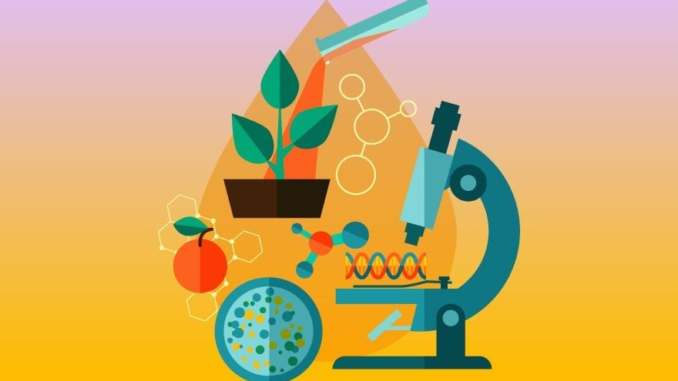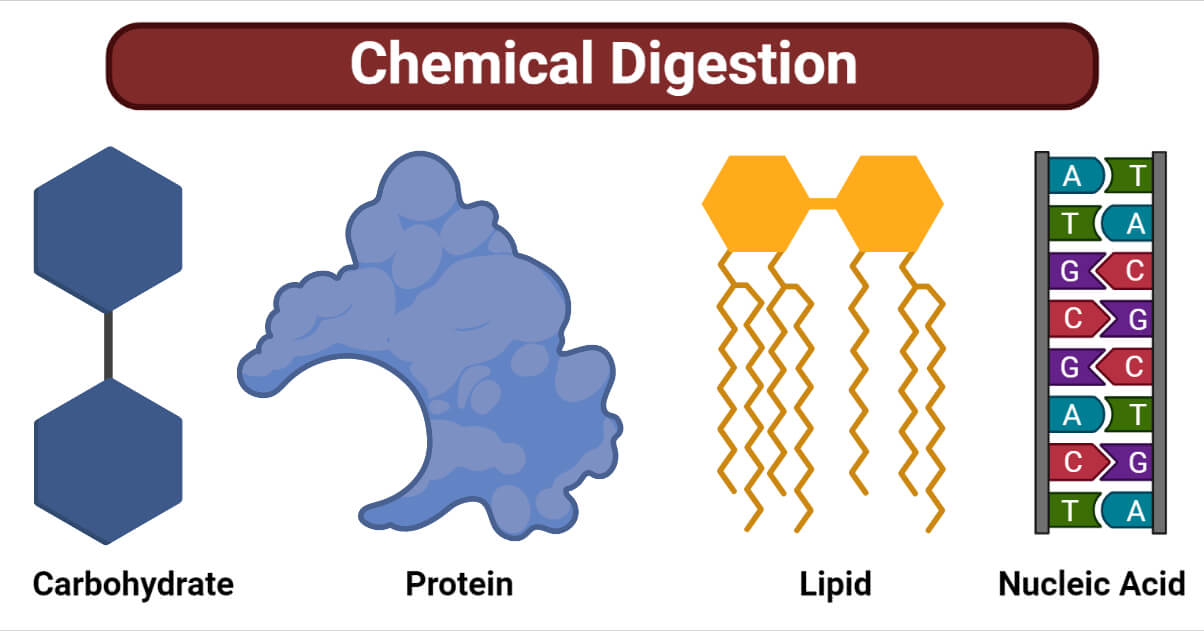
Plant Biochemistry II Notes 2024 MSc Botany 3rd Semester.All organisms acquire nutrients from the environment to survive. Some nutrients operate as building blocks for the formation of biological material, whereas others, such as vitamins, control the course of chemical reactions and produce energy when they are oxidize. However, not all nutrients are ready for an organism to use immediately; some need to undergo physical and chemical changes to be use as energy or cell material.Plant Biochemistry II Notes 2024 MSc Botany 3rd Semester.
s.Plant Physiology II Notes 2024 BS Botany 7th Semester
Plant Biochemistry II Notes 2024 MSc Botany 3th Semester
| Subject | View |
|---|---|
| Alkaloid | Download View |
| Determination of Alkaloid | Download View |
| B_Oxidation | Download View |
| Starch & Sucrose | Download View |
| Plant Biochemistry Book | Download View |
| Plant Biochemistry Important | Download View |
| Plant Biochemistry Past paper | Download View |
Biochemistry Part 1
As a result of their size and complexity, many nutrient molecules need to break down into smaller ones for the organism to utilize them.
The digestive system is specifically crafte to transform the food consumed into nutrients the body requires for energy, development, and cell repair. Water, vitamins, minerals, proteins, lipids, and carbohydrates are all examples of nutrients. The gastrointestinal tract is often knowas the GI tract or digestive tract, or alimentary canal.
Digestive enzymes are produce by the bacteria, often known as gut flora or microbiome in our GI tract. Moreover, a portion of the nervous and circulatory systems have a role, too. Together, the digestive system’s organs, blood, and hormones break down the food and liquid consumed. Catabolism, or the breakdown process, includes two distinct steps: Mechanical digestion and Chemical digestion. Likewise, the solid accessory organs of the digestive system are the liver, pancreas, and gallbladder.
Digestion breaks down complex dietary ingredients (molecules) into more easily absorbed, simpler forms. The six steps of the digestive process include ingestion, propulsion, mechanical or physical digestion, chemical digestion, absorption, and excretion.

Digestive enzymes are produce by the bacteria, often know as gut flora or microbiome in our GI tract. Moreover, a portion of the nervous and circulatory systems have a role, too. Together, the digestive system’s organs, blood, and hormones break down the food and liquid consumed. Catabolism, or the breakdown process, includes two distinct steps: Mechanical digestion and Chemical digestion.
Mechanical digestion entails physically reducing food substances into smaller particles to facilitate chemical digestion more effectively. It involves grinding food particles into smaller pieces with the help of teeth, and this process is know as mastication. It starts in the mouth that includes chewing and swallowing, followed by peristaltic mixing and propulsion in the esophagus and segmental mixing and propulsion in the small and large intestines.
What is Chemical digestion?
Chemical digestion involves further breaking dow the ingeste chemical’s molecular structure by digestive enzymes into a form that can be absorb into the bloodstream.
These two processes work together to produce effective digestion. Impairments in mechanical or chemical digestion can result in nutritional disorders and gastrointestinal diseases. Proteins, lipids, nucleic acid, and carbohydrates are large food molecules that need to be broken down into smaller subunits to be absorbed by the lining of the alimentary canal. Enzymes use hydrolysis to achieve this. Chemical digestion begins in our mouth with the saliva, continues in the stomach, and is completed in the small intestine. Most of the chemical digestion process occurs in the small intestine.
Ancient Bones of a Long Extinct, 10-Foot-Tall Bird Discovered in Australia
Carbohydrate digestion
The three monosaccharides frequently ingested and easily absorbed are glucose, galactose, and fructose. Several disaccharides, such as sucrose, lactose, and maltose, along with the polysaccharides, such as glycogen and starch, are all broken down by the digestive system. However, most fibrous polysaccharides, particularly cellulose, cannot be degraded by the enzymes in our bodies. These have no nutritional value, although these aid in moving food through the digestive tract.
- Amylase, which is responsible for breaking down starch, is released from salivary glands in the mouth to start the process of breaking down carbohydrates.
- The pancreas additionally secretes amylase and performs the task of “heavy lifting’ for starch and carbohydrate digestion.
- Digestive enzymes are produced by the bacteria, often known as gut flora or microbiome in our GI tract. Moreover, a portion of the nervous and circulatory systems have a role, too. Together, the digestive system’s organs, blood, and hormones break down the food and liquid consumed. Catabolism, or the breakdown process, includes two distinct steps: Mechanical digestion and Chemical digestion.Likewise, maltose, lactose, and sucrose are hydrolyze into monosaccharides unit by three brush border enzymes: maltase, lactase, and sucrase on the epithelium of the small intestine, near the channel proteins.
- Maltase degrades maltose and maltotriose into two or three glucose molecules.
- Sucrase converts sucrose into one molecule of fructose and one molecule of glucose.
- Lactase acts on lactose to yield one molecule of glucose and one molecule of galactose. Lactose intolerance may result from insufficient lactase.
- Since humans lack the cellulase enzyme necessary to break down cellulose, it travels through the body unprocessed.
- Glucose, fructose, and galactose are the end products of carbohydrate digestion.
Protein digestion
Proteins are polymers compose of long chains of amino acids connected by peptide bonds. The carbon-nitrogen(C-N) bond is hydrolyze to form basic amino acids during the digestion of proteins and polypeptides. To avoid auto-digestion, all proteolytic enzymes are secrete in an inactive form and become active in the intestinal lumen. Pepsinogen, a stomach enzyme, is activateby HCl, whereas pancreatic enzymes are activate by enteropeptidase and trypsin.
- Protein digestion begins in the stomach, where HCl denatures the proteins, and pepsin starts to break interior bonds of the amino acids into smaller polypeptides. Proteases (such as pepsin) work best in an acidic pH of 2. It’s primarily important to digest collagen, which is the main constituent of meat’s connective tissue. About 20% of the proteins are broke down by stomach pepsin, with the remaining 80% broke dow by pancreatic and small intestine enzymes.
- These smaller polypeptides then move on to the small intestine to be digeste. The small intestine’s brush border contains enzymes responsible for final digestion. There are two categories of enzymes: endo- and exo-peptidases. Endopeptidases secreted by the pancreas, such as trypsin, chymotrypsin, and carboxypeptidase, each act on internal particular bonds in amino acid sequences and break down shorter polypeptide chains. Given that the pancreas balances the intestine’s acidity, these endopeptidases function best in neutral conditions (pH 7)
- Likewise, the brush border’s cell also releases exopeptidase enzymes like aminopeptidases and carboxypeptidases, which further break off the terminal amino acid at either the carboxyl or amine end of the chain, respectively. As a result, chemicals that can enter the bloodstream are produce.
- Amino acids, dipeptides, and tripeptides are the end products of protein digestion.
Lipid digestion
Triglycerides, composed of a glycerol molecule coupled to 3 carboxylic acid chains, are the foremost prevalent dietary lipids. Consumption of phospholipids and dietary cholesterol is similarly minimal.
- The mouth, the stomach, and the pancreas all contain lipase. Lingual lipase, gastric lipase, and pancreatic lipase are the three lipases responsible for lipid digestion.
- Generally, it is thought that lingual lipase is primarily present for oral cleanliness and its anti-bacterial impact on the mouth because it is inactivate by stomach acid.
- In humans, the importance of gastric lipase is not very significant.
- Since the pancreas is the only significant lipase producer, almost all fat digestion occurs in the small intestine. Bile salts, which emulsify fats to enable their solution as micelles in the chyme and increase the surface areas for the pancreatic lipase to function, are particularly significant in fat digestion and absorption. Each triglyceride is divide by pancreatic lipase into two free fatty acids and a monoglyceride. The fatty acids come in short-chain (less than 10-12 carbons) and long-chain varieties.
- The final products of lipids are fatty acids, glycerol, and monoglycerides.
Nucleic acid digestion
Nucleic acid digestion takes place within the bowel.
- Two forms of pancreatic nuclease countermine the nucleic acids DNA and RNA: deoxyribonuclease, which catalyzes the breakdown of DNA into deoxyribonucleotides, and ribonuclease, which catalyze the breakdown of RNA into ribonucleotides.
- Two intestinal brush border enzymes, phosphatases and nucleosidase, further break down the nucleotides produce by the action of pancreatic nuclease.Digestive enzymes are produced by the bacteria, often know as gut flora or microbiome in our GI tract. Moreover, a portion of the nervous and circulatory systems have a role, too. Together, the digestive system’s organs, blood, and hormones break down the food and liquid consumed. Catabolism, or the breakdow process, includes two distinct steps: Mechanical digestion and Chemical digestion.deoxyribose sugar), and phosphate ions which can be absorbe through the alimentary wall.
